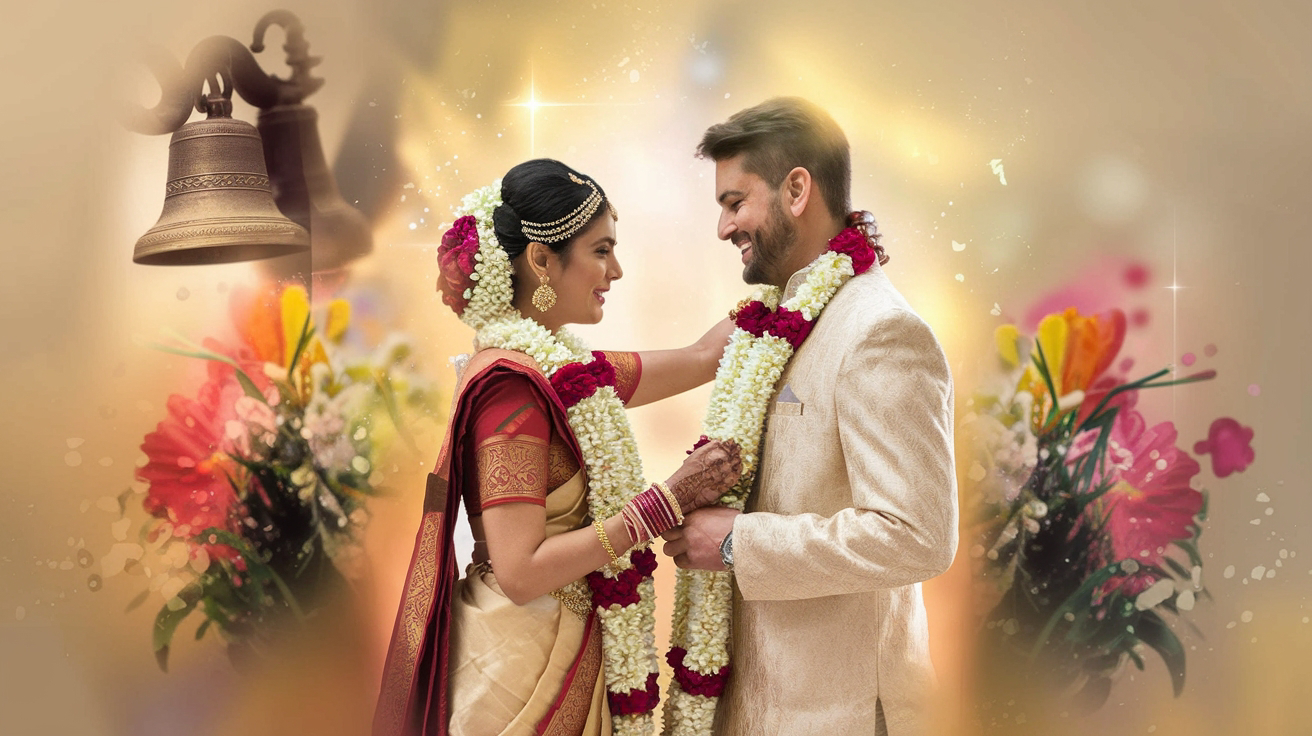In Bengali weddings, garlands are made of fresh flowers, symbolizing purity, beauty, and the blossoming of love. As the bride and groom exchange the garlands, it is more than just an adornment – it marks the moment when they accept each other as partners in life. The act of placing the garland around each other's necks signifies the sacred vows they are about to take, promising to walk together in harmony and love.
This ritual is performed during the "Saat Paake Bandha" (the seven vows), where the couple, standing together, exchange garlands as a declaration of their love and mutual respect. The moment is a blend of tradition and deep emotional connection, as they take their first step towards building a shared future. The garlands also represent the spirit of family, unity, and divine blessings, with each flower woven together to symbolize the intertwined lives of the bride and groom.
As the garlands are exchanged, the atmosphere is filled with an overwhelming sense of love, devotion, and celebration. The bride, dressed in her traditional red saree, embodies grace and beauty, her eyes sparkling with anticipation and joy. The groom, adorned in a traditional sherwani, gazes lovingly at his bride as he places the garland around her neck. Their hearts beat in unison, and their souls connect through this sacred exchange.
The moment is often accompanied by the soft sound of temple bells ringing in the background, enhancing the spiritual nature of the occasion. It is a moment of sacredness, as the couple becomes bound not only to each other but also to the divine forces that bless their union. As the garlands rest on their shoulders, it is a reminder of the sacred journey they are about to undertake together, hand in hand, through the highs and lows of life.
The exchange of garlands signifies the start of a new chapter. For the bride, it is a transition from her parental home to a new life with her partner. For the groom, it is the embrace of a new family, responsibilities, and the commitment to nurture and protect the love they share. The flowers of the garland, vibrant and full of life, are symbolic of the hope and joy that this union brings.
This moment marks the beginning of not only a marital relationship but also a shared life of companionship, love, and mutual respect. The couple, now bound by love and tradition, embark on a path of togetherness that is blessed by family, friends, and divine forces. It is a symbol of their commitment to love, cherish, and grow together as they build their new world, one step at a time.
Creating Memories Through Images
The beauty and depth of the Mala Badalna ritual can be captured in a stunning visual that embodies the essence of the occasion. Picture a serene, romantic wedding scene where the bride and groom are exchanging garlands. The bride, resplendent in her red saree, is gracefully holding her garland, while the groom, dressed in a traditional sherwani, lovingly places it around her neck. Soft golden light bathes the couple, symbolizing the warmth of their love and the new beginning they are embarking upon.
In the background, the faint sound of a temple bell ringing adds a layer of spiritual depth, while vibrant flowers scatter the scene, representing the joy and celebration that surrounds their union. The gentle blend of colors captures the sacredness and joy of the moment, bringing to life the emotions of love, hope, and commitment.
Conclusion
The exchange of garlands is a moment that goes beyond the physical act of a wedding ritual. It is a declaration of love, a promise of devotion, and a celebration of the sacred bond that two souls share. In Bengali weddings, this moment is steeped in cultural and spiritual significance, and it holds a place of honor in the hearts of all who witness it. Through this sacred ritual, the couple steps into a new world, hand in hand, ready to create a life filled with love, laughter, and shared dreams.



























